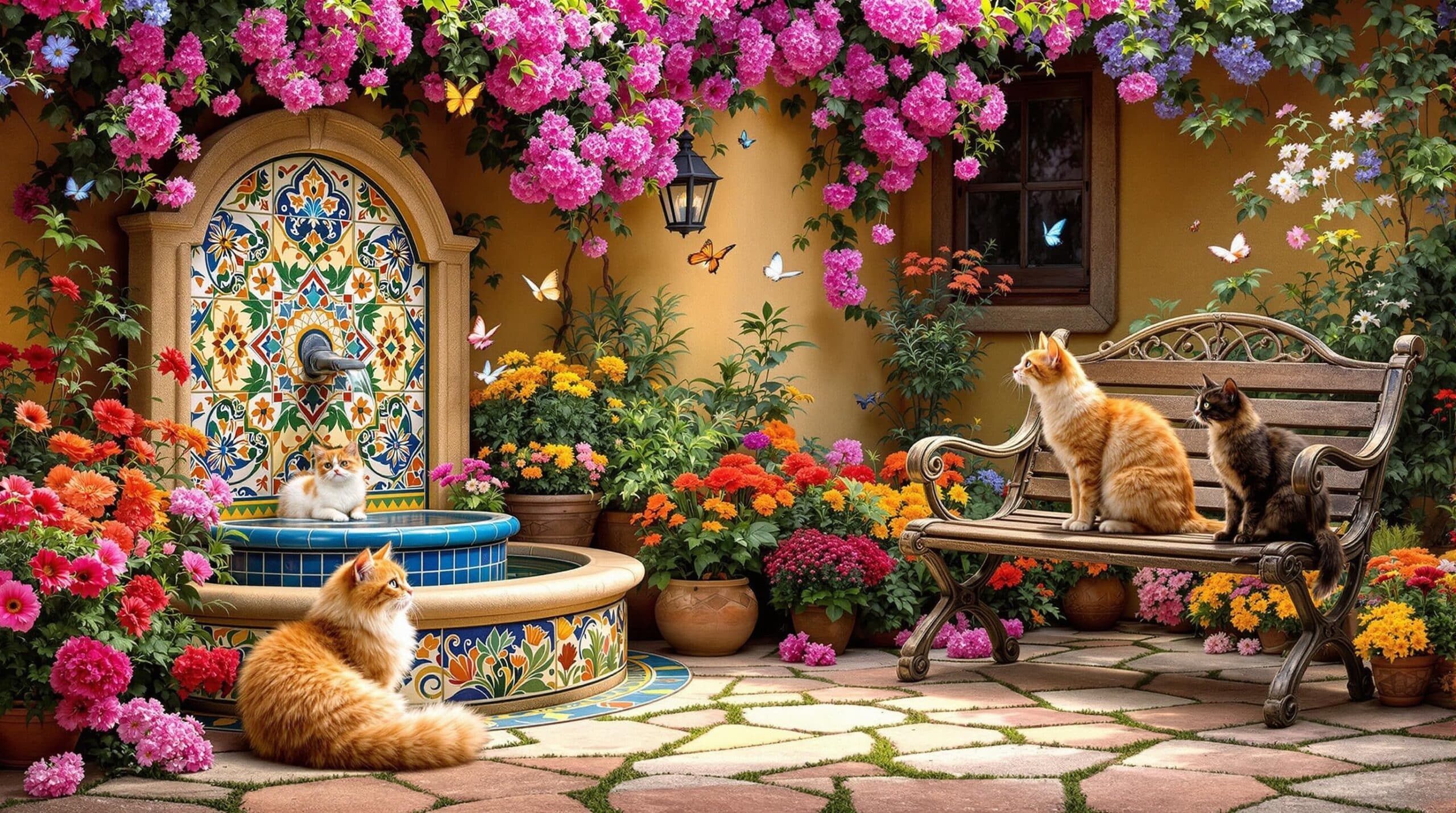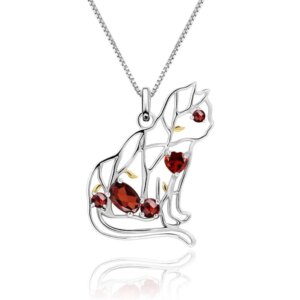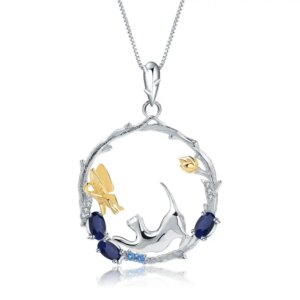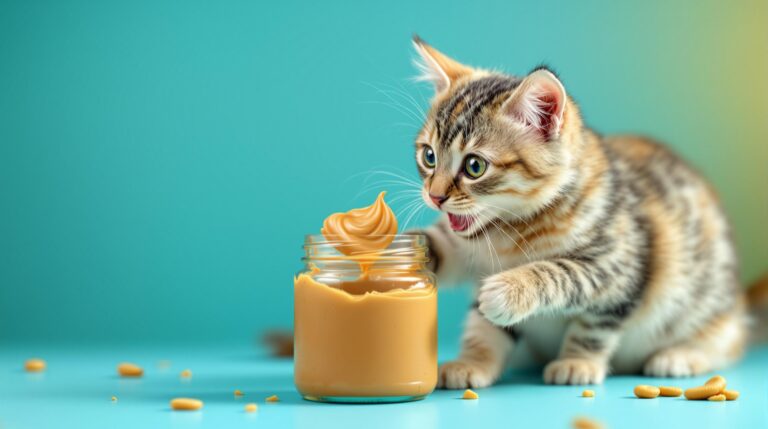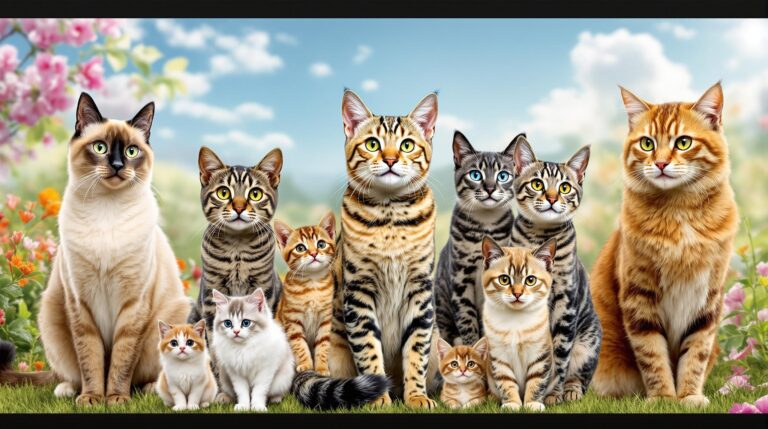Welcome to our comprehensive guide on ‘cats in Spanish.’ Whether you’re a cat lover looking to expand your knowledge or a Spanish speaker interested in cat-related topics, this article will cover everything you need to know. From essential vocabulary to cultural insights, we’ll provide valuable information to enhance your understanding and appreciation of cats in the Spanish-speaking world. By the end of this guide, you’ll be well-equipped to communicate about cats in Spanish and enjoy a deeper connection with your feline friends. Visit our website to find excellent gifts for cat lovers and follow us on social media for more engaging content.
Understanding Cats in Spanish
Cultural Significance of Cats in Spanish-Speaking Countries
Cats have a rich cultural significance in many Spanish-speaking countries. In Spain, for example, the Cat of Girona is a famous feline statue that has become a symbol of the city. In Mexico, cats are often depicted in folk art and are seen as protectors of the home. Understanding the cultural role of cats in Spanish-speaking countries can deepen your appreciation of these beloved animals. For instance, in many Latin American cultures, cats are often associated with luck and protection, making them popular pets and symbols in various traditions. If you’re interested in unique cat-themed gifts, check out our cat-themed jewelry.
Common Spanish Cat Names and Their Meanings
Choosing a name for your cat can be a fun and meaningful process. In Spanish, there are many beautiful and unique names that reflect the language’s rich heritage. Some popular choices include:
- Bella (Beautiful)
- Milo (Soldier)
- Luna (Moon)
- Sol (Sun)
- Chico (Boy)
- Chica (Girl)
Each name carries its own significance and can add a personal touch to your feline friend. For example, ‘Bella’ is a classic choice that highlights the beauty of your cat, while ‘Luna’ evokes a mystical and serene quality. Our store offers a wide range of cat-themed jewelry and gifts that can complement your cat’s unique name.
Essential Cat Vocabulary in Spanish
Knowing the essential cat vocabulary in Spanish can help you communicate more effectively with Spanish-speaking cat owners. Here are some common terms and phrases:
- Gato (Cat)
- Gata (Female Cat)
- Gatito (Kitten)
- Miau (Meow)
- Alimentar (To feed)
- Cuidar (To care for)
- Pelaje (Fur)
- Cola (Tail)
- Ojos (Eyes)
- Patitas (Paws)
These terms can be used in everyday conversations about cats and can help you understand and participate in discussions about feline care and behavior in Spanish. Our Redbubble store offers a variety of cat-themed products, including clothing and accessories.
Cat Care in Spanish
Basic Cat Care Tips in Spanish
Proper cat care is essential for ensuring your feline friend stays healthy and happy. Here are some basic cat care tips in Spanish:
- Proporcione una dieta equilibrada (Provide a balanced diet)
- Mantenga la caja de arena limpia (Keep the litter box clean)
- Ofrezca suficiente agua fresca (Offer plenty of fresh water)
- Proporcione un lugar cómodo para dormir (Provide a comfortable sleeping place)
- Realice visitas regulares al veterinario (Schedule regular vet visits)
By following these tips, you can ensure that your cat receives the best possible care and enjoys a long, healthy life. For more tips and ideas, follow us on Facebook and Instagram.
Grooming and Hygiene in Spanish
Grooming and hygiene are crucial aspects of cat care. Regular grooming not only keeps your cat looking beautiful but also helps prevent health issues. Here are some grooming and hygiene tips in Spanish:
- Cepille el pelo regularmente (Brush the fur regularly)
- Recorte las uñas con cuidado (Trim the nails carefully)
- Limpie los ojos y las orejas (Clean the eyes and ears)
- Peine el pelaje para evitar enredos (Comb the fur to prevent tangles)
- Ofrezca baños ocasionales (Provide occasional baths)
These practices will help keep your cat clean, comfortable, and free from common health problems. Our nature-inspired jewelry collection includes pieces that can complement your cat’s grooming routine.
Nutrition and Diet in Spanish
A well-balanced diet is vital for your cat’s health and well-being. Here are some tips for ensuring your cat receives proper nutrition in Spanish:
- Elija alimentos de alta calidad (Choose high-quality food)
- Proporcione alimentos específicos para gatos (Provide cat-specific food)
- Evite alimentos dañinos (Avoid harmful foods)
- Ofrezca agua fresca y limpia (Offer fresh, clean water)
- Controla la cantidad de comida (Control the amount of food)
By following these guidelines, you can ensure that your cat receives all the necessary nutrients and stays in optimal health. For more information on cat care, visit our sterling silver jewelry collection, where you can find beautiful and meaningful pieces for cat lovers.
Cat Training in Spanish
Basic Training Commands in Spanish
Training your cat can be a rewarding experience and can help improve your bond with your feline friend. Here are some basic training commands in Spanish:
- Ven (Come)
- Sienta (Sit)
- Acuéstate (Lie down)
- Quédate (Stay)
- No (No)
- Buen chico/niña (Good boy/girl)
Using these commands consistently can help your cat learn and respond to your instructions, making training sessions more effective and enjoyable. Our cat-themed jewelry can be a perfect gift for cat owners who enjoy training their cats.
Behavior Modification Techniques in Spanish
Behavior modification techniques can help address common behavioral issues in cats. Here are some tips for modifying your cat’s behavior in Spanish:
- Identifica el problema (Identify the problem)
- Establece una rutina (Establish a routine)
- Proporciona juguetes y actividades (Provide toys and activities)
- Recompensa el comportamiento positivo (Reward positive behavior)
- Evita el castigo físico (Avoid physical punishment)
By using these techniques, you can help your cat develop good habits and reduce unwanted behaviors. Our store offers a variety of cat-themed gifts that can make training more fun and engaging.
Litter Box Training in Spanish
Litter box training is an essential part of cat care. Here are some tips for successful litter box training in Spanish:
- Elija la caja de arena adecuada (Choose the right litter box)
- Coloque la caja en un lugar tranquilo (Place the box in a quiet location)
- Mantenga la caja de arena limpia (Keep the litter box clean)
- Recompense el uso correcto (Reward proper use)
- Sea paciente y consistente (Be patient and consistent)
By following these steps, you can help your cat become comfortable with using the litter box and maintain good hygiene habits. For more tips and resources, visit our website.
Cat Health in Spanish
Common Health Issues in Spanish
Cats can be prone to various health issues, and it’s important to be aware of the common problems to ensure early detection and treatment. Here are some common health issues in Spanish:
- Obesidad (Obesity)
- Problemas dentales (Dental problems)
- Infecciones urinarias (Urinary tract infections)
- Parásitos (Parasites)
- Enfermedades del corazón (Heart diseases)
By recognizing the signs of these issues, you can take proactive steps to keep your cat healthy and seek veterinary care when needed. Our store offers a range of cat-themed gifts that can help you celebrate your cat’s health and well-being.
Preventive Care Tips in Spanish
Preventive care is crucial for maintaining your cat’s health. Here are some tips for preventive care in Spanish:
- Vacune a su gato regularmente (Vaccinate your cat regularly)
- Realice exámenes veterinarios anuales (Schedule annual vet check-ups)
- Control de parásitos (Flea and worm control)
- Mantenga una dieta equilibrada (Maintain a balanced diet)
- Proporcione ejercicio regular (Provide regular exercise)
By following these tips, you can help prevent common health issues and ensure your cat stays in top condition. For more information on cat health, visit our website and explore our sterling silver jewelry collection.
Veterinary Resources in Spanish
Access to reliable veterinary resources is essential for proper cat care. Here are some useful resources in Spanish:
- Veterinarios especializados en gatos (Cat specialists)
- Clínicas de bajo costo (Low-cost clinics)
- Sitios web de información veterinaria (Veterinary information websites)
- Grupos de apoyo en línea (Online support groups)
- Foros de cuidado de gatos (Cat care forums)
These resources can provide valuable information and support for cat owners, helping you make informed decisions about your cat’s health and well-being. Follow us on Facebook and Instagram for more tips and updates.
Popular Quote
“A house is not a home when it does not contain a cat and a dog, and all who love them will agree.” – Robert J. Burdette
Statistical Fact
According to the American Pet Products Association, approximately 95.6 million cats are owned as pets in the United States. This statistic highlights the widespread love and companionship that cats provide to their human families. (Source: American Pet Products Association, 2021)
Three Tips for Cat Lovers in Spanish
- Adopt, Don’t Shop: Consider adopting a cat from a local shelter or rescue organization. Adopting not only gives a cat a second chance at a happy life but also helps reduce the number of homeless animals.
- Regular Vet Visits: Schedule regular veterinary check-ups to ensure your cat stays healthy. Early detection of health issues can make a significant difference in your cat’s well-being.
- Interactive Play: Engage your cat in interactive play sessions to keep them mentally and physically stimulated. Toys and activities can help reduce boredom and prevent behavioral issues.
Popular Questions About Cats in Spanish
- ¿Cuál es la mejor edad para adoptar un gato? The best age to adopt a cat depends on your lifestyle and preferences. Kittens are playful and energetic, while adult cats are often calmer and more predictable.
- ¿Cómo puedo entrenar a mi gato para usar la caja de arena? Start by placing the litter box in a quiet, accessible location. Use a non-clumping, unscented litter and reward your cat for using the box correctly.
- ¿Qué alimentos debo evitar darle a mi gato? Avoid giving your cat foods that are toxic to cats, such as chocolate, onions, garlic, and grapes. Stick to cat-specific food to ensure a balanced diet.
- ¿Cómo puedo mantener a mi gato entretenido? Provide a variety of toys, scratching posts, and interactive play sessions. Consider setting up a window perch or a cat tree to keep your cat engaged and active.
- ¿Cuánto ejercicio necesita mi gato? Cats need regular exercise to stay healthy and prevent obesity. Aim for at least 15-30 minutes of playtime each day to keep your cat active and engaged.
Final Thoughts About Cats in Spanish
In conclusion, understanding ‘cats in Spanish’ opens up a world of cultural richness and practical knowledge. Whether you’re a Spanish speaker or a cat lover, this guide has provided valuable insights into cat care, training, and health in the Spanish language. We encourage you to explore more about cats in Spanish and share your newfound knowledge with others. Visit our website to find excellent gifts for cat lovers and follow us on social media for more engaging content. If you have any questions or need custom orders, feel free to contact us at info@catkarmacreations.com or call us at (800) 343-1604.

